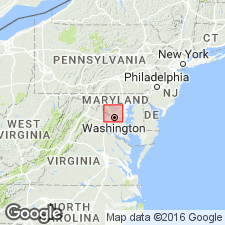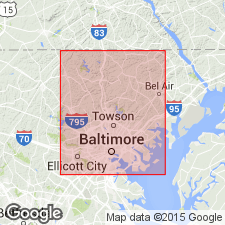
- Usage in publication:
-
- Leakin Park Gneiss
- Modifications:
-
- First used
- Dominant lithology:
-
- Gneiss
- AAPG geologic province:
-
- Piedmont-Blue Ridge province
Summary:
Named on legend of small scale geologic map of gneiss domes in Howard and Baltimore Cos. MD. Quartzo-feldspathic rocks in the Laurel belt are divided into Leakin Park and Ilchester Gneiss. No description of either unit is given and neither are they mentioned elsewhere. General age of early to middle Paleozoic listed.
Source: GNU records (USGS DDS-6; Reston GNULEX).

- Usage in publication:
-
- Leakin Park Gneiss†
- Modifications:
-
- Not used
- AAPG geologic province:
-
- Piedmont-Blue Ridge province
Summary:
Though Hopson (1964) assigned the quartzo-feldspathic rocks in the Laurel belt to two formations, the Ilchester Gneiss and the Leakin Park Gneiss, these rocks are here mapped as one continuous unit intrusive into the Baltimore Mafic Complex and overlying rocks. The formal name Cold Spring Gneiss is proposed.
Source: GNU records (USGS DDS-6; Reston GNULEX).
For more information, please contact Nancy Stamm, Geologic Names Committee Secretary.
Asterisk (*) indicates published by U.S. Geological Survey authors.
"No current usage" (†) implies that a name has been abandoned or has fallen into disuse. Former usage and, if known, replacement name given in parentheses ( ).
Slash (/) indicates name conflicts with nomenclatural guidelines (CSN, 1933; ACSN, 1961, 1970; NACSN, 1983, 2005, 2021). May be explained within brackets ([ ]).

